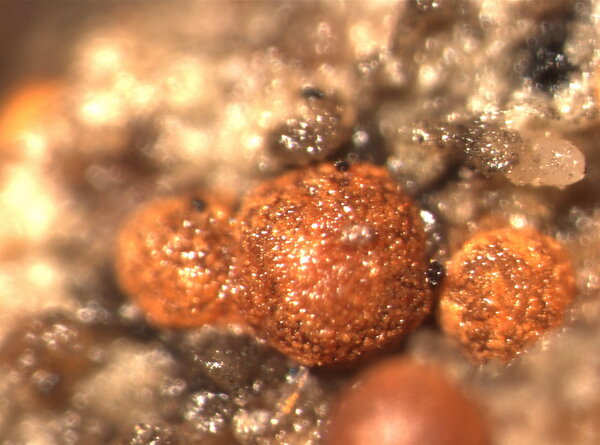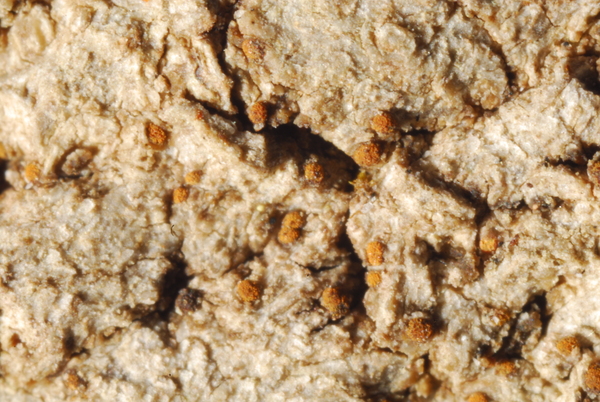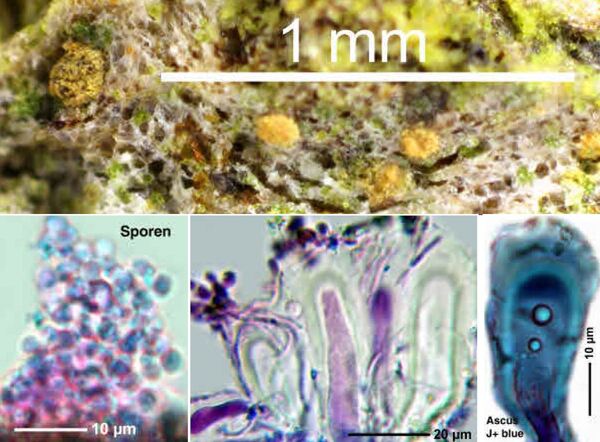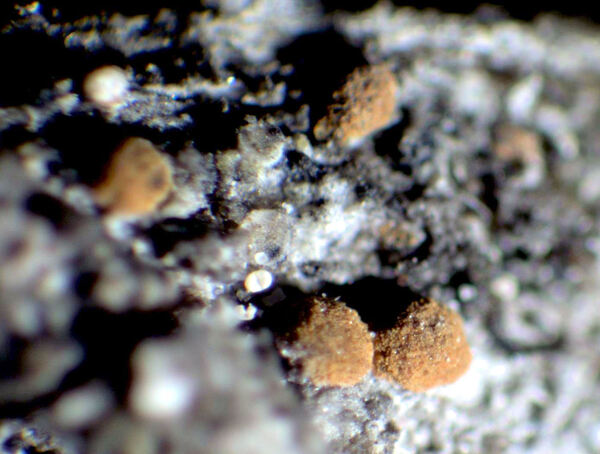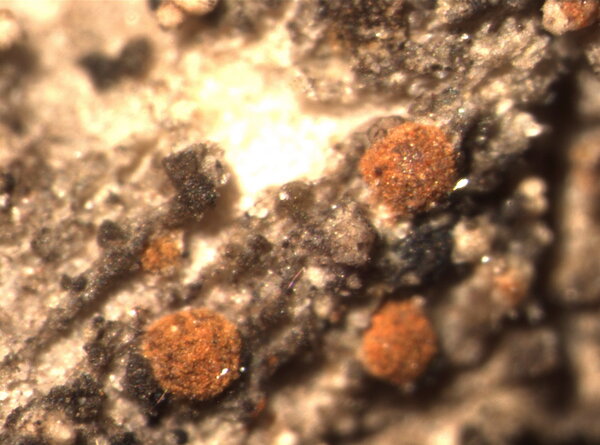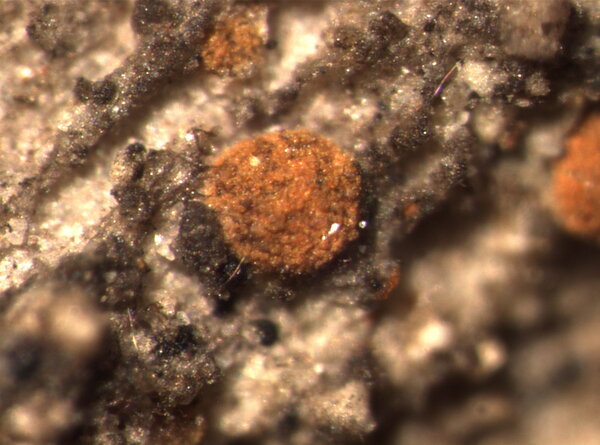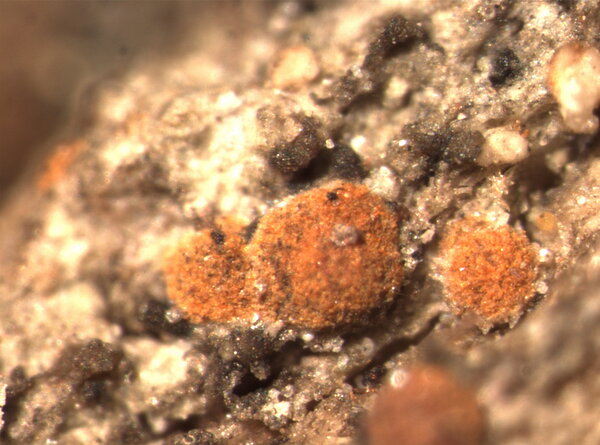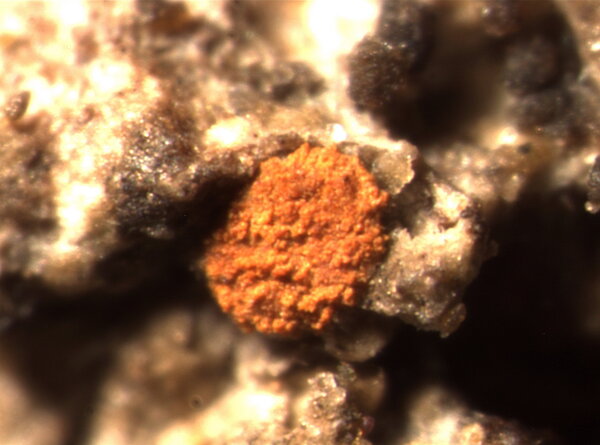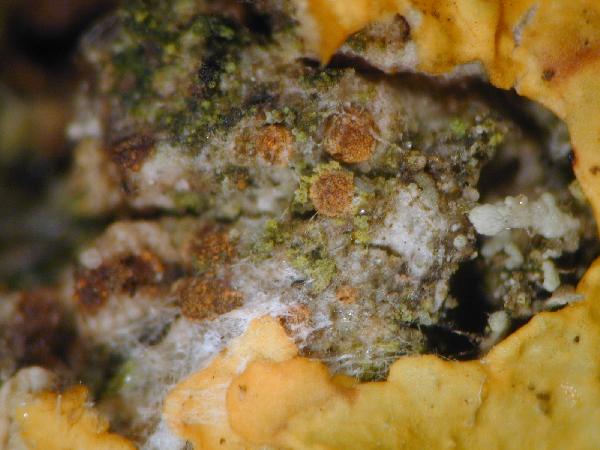Piccolia ochrophora (Nyl.) Hafellner
Symb. Bot. Upsal., 34, 1: 91, 1995. Basionym: Lecidea ochrophora Nyl. - Flora, 48: 355, 1865.
Synonyms: Biatorella ochrophora (Nyl.) Arnold; Biatorella ochrophora var. planiuscula Vězda; Strangospora ochrophora (Nyl.) R.A. Anderson
Distribution: N - Emil (Nimis & al. 1996, Tretiach & al. 2008, Fariselli & al. 2020). C - Tosc, Umb (Ravera 2000, Ravera & al. 2006), Laz (Ravera 2001, Munzi & al. 2014), Abr (Caporale & Pagliani 2010, 2013, 2014, Caporale & al. 2012), Mol (Caporale & al. 2008, Caporale & Ravera 2020), Sar (Zedda 2002, Rizzi & al. 2011, Di Nuzzo & al. 2022). S - Pugl (Nimis & Tretiach 1999), Bas (Bartoli & Puntillo 1996, 1998), Cal (Puntillo 1996, Puntillo & Puntillo 2004, Incerti & Nimis 2006), Si (Ottonello & Puntillo 1995, 2009).
Description: Thallus crustose, very thin, whitish to pale grey, often indistinct. Apothecia biatorine, 0.2-0.5 mm across, very brittle when sectioned, pale ochraceous yellow to deep orange, adnate to subsessile, with a convex, orange-red-pruinose disc and a thin, finally excluded proper margin. Proper exciple red-orange to brown-yellow, 10-20 µm thick, K+ red; epithecium orange-red, densely inspersed with golden yellow, minute granules reacting K+ red and dissolving in K; hymenium pale orange-yellow, (60-)80-110 µm high; paraphyses coherent, branched and anastomosing in upper part, 1-1.5 µm thick at base, the apical cells 3-3.5 µm wide; hypothecium ochre-coloured to colourless in lower part, 50-150 µm high. Asci 100-200-spored, clavate or oval, with a K/I+ blue gelatinous outer layer and an evident apical dome which reacts I+ blue in young asci, I- in old ones. Ascospores 1-celled, hyaline, globose, (2.5-)3-4(-5) µm wide. Pycnidia usually rare, rarely abundant, whitish. Conidia globose, c. 3 µm in diam. Photobiont chlorococcoid. Spot tests: thallus K-, C-, KC-, P-, UV-. Chemistry: thallus without lichen substances; apothecia with anthraquinones. Note: a mild-temperate species found on Populus, but also on Sambucus and other trees with base-rich bark in rather shaded and humid situations; overlooked, but certainly rare and declining. It is included in the Italian red list of epiphytic lichens under the “Least Concern” category (Nascimbene & al. 2013c).
Growth form: Crustose
Substrata: bark
Photobiont: green algae other than Trentepohlia
Reproductive strategy: mainly sexual
Most common in areas with a humid-warm climate (e.g. most of Tyrrenian Italy)
Commonnes-rarity: (info)
Alpine belt: absent
Subalpine belt: absent
Oromediterranean belt: absent
Montane belt: absent
Submediterranean belt: extremely rare
Padanian area: absent
Humid submediterranean belt: very rare
Humid mediterranean belt: extremely rare
Dry mediterranean belt: absent
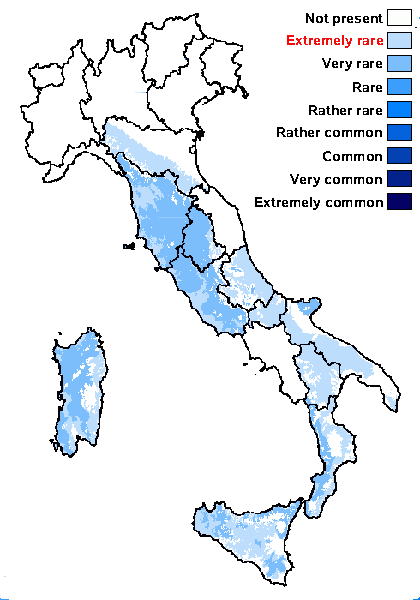
Predictive model
Herbarium samples
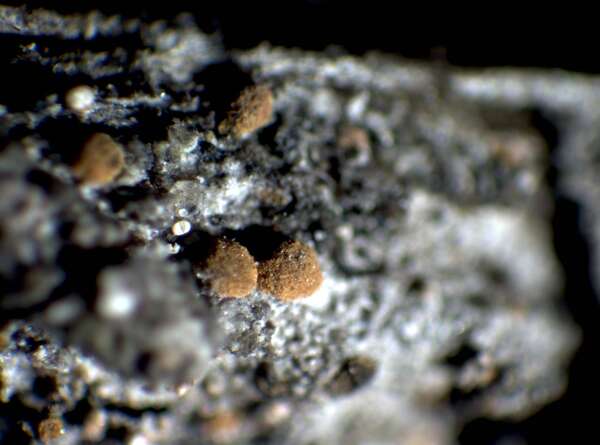

P.L. Nimis; Owner: Department of Life Sciences, University of Trieste
Herbarium: TSB (18189)
2001/11/22
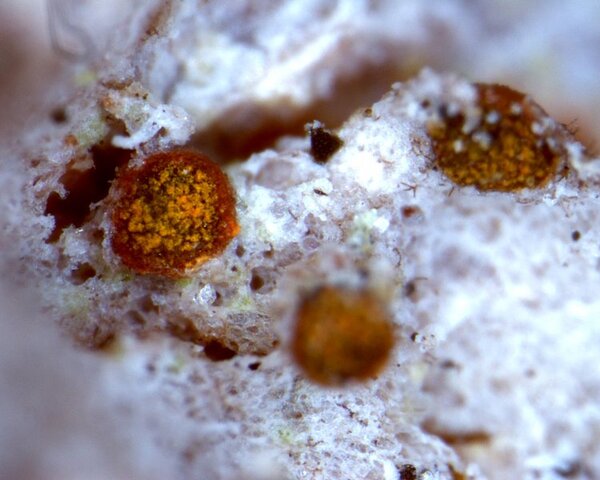

Curtis Randall Björk – CC BY-SA 4.0
British Columbia, Clearwater Valley, near base of Dawson Falls Date: 2008-03-09 Photographed from specimen (Björk 15194, UBC), on trunk of large old Populus trichocarpa in sprayzone of large waterfall
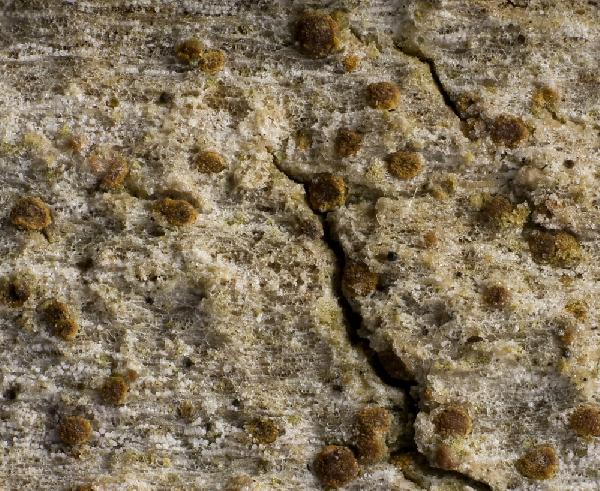
Ulrich Kirschbaum CC BY-SA 4.0 - Source: https://www.thm.de/lse/ulrich-kirschbaum/flechtenbilder
Central Europe: Germany. (Coll/ident: Eichler & Cezanne).
Growth form: Crustose
Substrata: bark
Photobiont: green algae other than Trentepohlia
Reproductive strategy: mainly sexual
Most common in areas with a humid-warm climate (e.g. most of Tyrrenian Italy)
Commonnes-rarity: (info)
Alpine belt: absent
Subalpine belt: absent
Oromediterranean belt: absent
Montane belt: absent
Submediterranean belt: extremely rare
Padanian area: absent
Humid submediterranean belt: very rare
Humid mediterranean belt: extremely rare
Dry mediterranean belt: absent

Predictive model
| Herbarium samples |


P.L. Nimis; Owner: Department of Life Sciences, University of Trieste
Herbarium: TSB (18189)
2001/11/22


Curtis Randall Björk – CC BY-SA 4.0
British Columbia, Clearwater Valley, near base of Dawson Falls Date: 2008-03-09 Photographed from specimen (Björk 15194, UBC), on trunk of large old Populus trichocarpa in sprayzone of large waterfall

 INDEX FUNGORUM
INDEX FUNGORUM
 GBIF
GBIF
